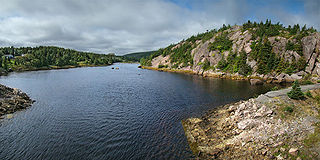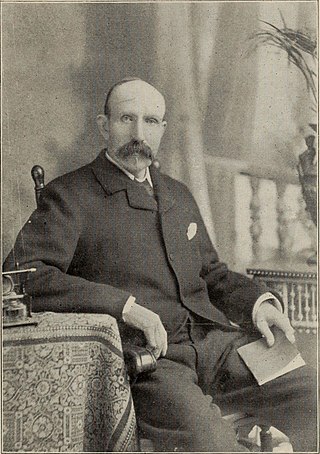
Avondale is a town located on Newfoundland's Avalon Peninsula in the province of Newfoundland and Labrador, Canada, which was incorporated in 1974. The community is situated at the southwestern head of Conception Bay in Division 1. It is located 59 km (37 mi) southwest of St. John's and 72 km (45 mi) northeast of Placentia.

Marine Atlantic Inc. is an independent Canadian federal Crown corporation which is mandated to operate ferry services between the provinces of Newfoundland and Labrador and Nova Scotia.

Division 1, Newfoundland and Labrador is a census division covering the entire Avalon Peninsula including the Isthmus of Avalon of the Canadian province of Newfoundland and Labrador. Like all census divisions in Newfoundland and Labrador, but unlike the census divisions of some other provinces, the division exists only as a statistical division for census data, and is not a political entity.

Channel-Port aux Basques is a town at the extreme southwestern tip of Newfoundland fronting on the western end of the Cabot Strait. A Marine Atlantic ferry terminal is located in the town which is the primary entry point onto the island of Newfoundland and the western terminus of the Newfoundland and Labrador Route 1 in the province. The town was incorporated in 1945 and its population in the 2021 census was 3,547.

The Newfoundland Railway was a narrow-gauge railway that operated on the island of Newfoundland from 1898 to 1988. With a total track length of 906 miles (1,458 km), it was the longest 3 ft 6 in narrow-gauge system in North America.
Terra Transport (TT) was the name for the Newfoundland Transportation Division, a wholly owned subsidiary of Canadian National Railway (CN), created in 1979 as a means to organize the company's operations on Newfoundland.

Sir Robert Gillespie Reid was a Scottish railway contractor most famous for building large railway bridges in Canada and the United States. Founder of Reid Newfoundland Company, from 1889 until his death, he built, owned, and operated the Newfoundland Railway.

M/V William Carson was a CN Marine passenger/vehicle icebreaker ferry named in honour of Newfoundland colonial politician William Carson.

Carbonear is a town on the Avalon Peninsula in Newfoundland and Labrador, Canada. It overlooks the west side of Conception Bay and had a history long tied to fishing and shipbuilding. Since the late 20th century, its economy has changed to emphasize education, health care, retail, and industry. As of 2021, there were 4,696 people in the community.
Victoria is an incorporated town in Conception Bay located approximately midway on the Bay de Verde Peninsula of Newfoundland and Labrador, Canada.
Route 1 is a highway in the Canada province of Newfoundland and Labrador, and is the easternmost stretch of the Trans-Canada Highway. Route 1 is the primary east–west road on the island of Newfoundland.
The Newfoundland T'Railway Provincial Park is a rail trail located in the Canadian province of Newfoundland and Labrador.
The Reid Newfoundland Company was incorporated in September 1901 and was the operator of the Newfoundland Railway across the island from 1901 to 1923. For a time it was the largest landowner in the Dominion of Newfoundland, today the modern Canadian province of Newfoundland and Labrador. The company was founded by Sir Robert Gillespie Reid of Scotland, a businessman who had interests in the development of the pulp and paper industry and mining industry. The company was also the owner and operator of the coastal boat service, known as the Alphabet Fleet, the telegraph line and the electrical service in St. John's.
DRL Coachlines is a motor coach bus company operating in the Canadian province of Newfoundland and Labrador.
Brigus Junction is a designated place in the Canadian province of Newfoundland and Labrador.

SS Kyle is a 220 feet (67 m) steam ship that is aground in the harbour of the Town of Harbour Grace, Newfoundland and Labrador, Canada. She ran ashore in February 1967. Intended to transport supplies and provide transportation from Carbonear to Labrador, she was also used to transport infantry to Canada during World War II. After her grounding on the shores of Riverhead, Harbour Grace, she has had several owners, from the Earle Brothers Freighting Company, Dominion Metals, and the Government of Newfoundland. Plans to have the vessel moved to the town of Salmon Cove, Newfoundland, and turned into a museum were later aborted due to financial implications.

The following outline is provided as an overview of and topical guide to Newfoundland and Labrador.












